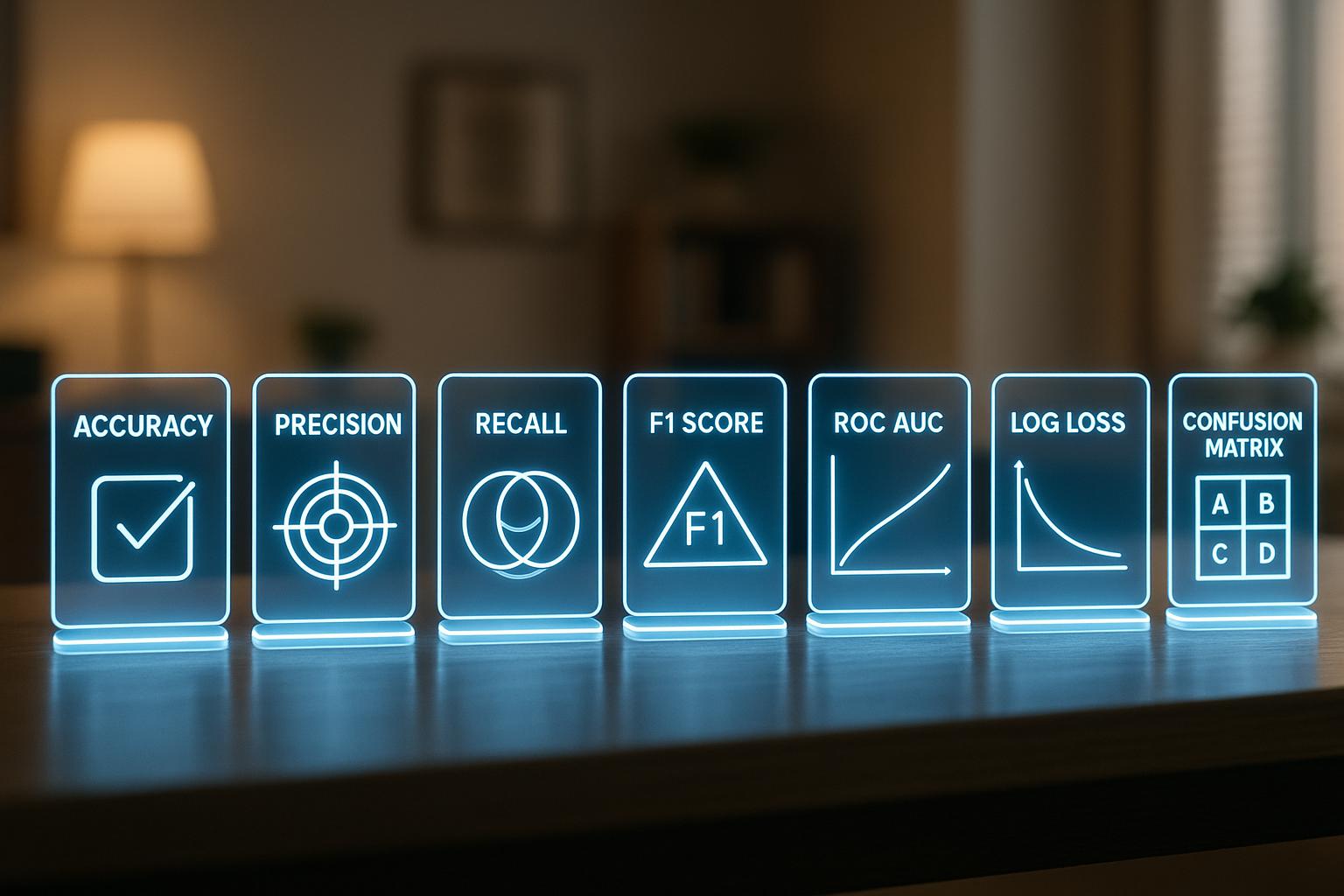Natural Language Processing (NLP) is transforming how small and medium-sized enterprises (SMEs) combat spam. Unlike traditional spam filters that rely on simple keyword matching, NLP analyzes context, intent, and patterns within email content. This advanced approach significantly reduces false positives, boosts detection accuracy to over 99%, and provides a more secure email environment.
Key Takeaways:
- Email Spam Challenges for SMEs: SMEs face phishing attacks, malicious URLs, and Business Email Compromise (BEC), with 98% of breaches linked to human error in 2023.
- Why NLP is Effective: NLP systems analyze text and metadata to detect sophisticated spam tactics, such as disguised phrases or sender behavior anomalies.
- Benefits for SMEs:
- Higher Accuracy: NLP-driven filters outperform traditional systems, with fewer false positives and better spam detection.
- Time & Cost Savings: Automating spam filtering reduces manual effort, allowing employees to focus on core tasks.
- Improved Security: NLP tools help prevent phishing, malware, and data breaches.
By adopting NLP-based solutions, SMEs can streamline email management, protect sensitive information, and improve productivity - all without requiring extensive IT resources.
How NLP Makes Spam Detection Better
Main NLP Methods for Spam Detection
NLP takes spam detection to a whole new level by transforming email text into structured data that machines can analyze. This process starts with techniques like tokenization, stop-word removal, and stemming, which break down and simplify email content into a format that's easier for algorithms to process.
One of NLP's standout features is its ability to understand the meaning behind words. Using tools like word embeddings, NLP can link phrases with similar meanings. For example, it can recognize that "urgent wire transfer" and "immediate money transfer" are likely signaling the same kind of spam, even though the wording is different.
But NLP doesn’t stop at analyzing the text. It also looks at metadata - things like who sent the email and their sending habits - to make its detection even sharper. This combined analysis helps catch more sophisticated spam that might otherwise go unnoticed by filters that only focus on the text.
What makes NLP even more powerful is its ability to learn and adapt. These systems continuously improve by analyzing new data, staying one step ahead of spammers as they evolve their tactics. For instance, when a new type of phishing email appears, the system can quickly spot similar patterns and adjust its detection methods accordingly.
A great example of this adaptability is how NLP assigns higher spam probabilities to emails filled with obvious promotional language while distinguishing genuine remarks more effectively.
Traditional Filtering vs NLP-Based Detection
When you compare traditional spam filters to NLP-based systems, the differences are striking. Traditional filters rely on simple keyword matching and predefined rules, while NLP systems dive deeper, analyzing patterns, context, and the meaning behind the words.
Here’s a side-by-side look at how these two approaches stack up:
| Aspect | Traditional Filtering | NLP-Based Detection |
|---|---|---|
| Detection Method | Keyword matching and rule-based blocking | Context analysis, semantic understanding, and pattern recognition |
| Adaptability | Manual rule updates required | Learns automatically from new data and evolving threats |
| Accuracy | Limited by static rules | Achieves up to 98% accuracy with metadata analysis |
| False Positives | Higher risk of blocking legitimate emails | Better at distinguishing spam from real messages |
| Sophistication | Struggles with context or intent | Detects subtle patterns and language anomalies |
| Maintenance | Requires frequent manual updates | Self-improving through machine learning |
The improvement in accuracy is particularly noteworthy. A 2023 study by MIT found that combining NLP's text analysis with metadata evaluation can push detection accuracy to an impressive 98%, a huge leap over traditional methods that often fail to keep up with evolving spam techniques.
What sets NLP apart is its ability to identify patterns that traditional filters miss. It can detect unnatural phrasing, repetitive content typical of spam, and clever tricks like substituting letters with numbers to bypass keyword filters. For instance, while a traditional filter might overlook a phishing email using "w1re tr4nsfer" instead of "wire transfer", an NLP system can catch the similarity and flag it as suspicious.
Another game-changer is NLP's learning capability. Traditional systems require IT teams to manually update rules whenever spammers change their tactics. In contrast, NLP systems adapt automatically, recognizing new spam patterns on their own. This makes them especially valuable for smaller businesses that may not have dedicated cybersecurity teams to handle constant updates.
Finally, NLP frameworks powered by deep learning can process massive amounts of data and uncover complex patterns that rule-based systems simply can't handle. This scalability makes them a perfect fit for businesses that need strong protection without the hassle of constant maintenance.
1. Email Spam Detection with Natural Language Processing (NLP) | Spam Classifier
Benefits of NLP Spam Filtering for SMEs
NLP-based spam filtering offers a range of practical advantages for small and medium-sized enterprises (SMEs).
Improved Accuracy with Fewer Errors
Traditional email filters typically achieve accuracy rates between 60% and 80%, while NLP-driven systems surpass 99% accuracy.
"An intelligent message filter is an AI-powered email security system that analyzes message content, sender behavior, and threat patterns to automatically classify, block, or quarantine suspicious emails with 99%+ accuracy." - Axis Intelligence
NLP technology significantly reduces false positives - by as much as 85%. By analyzing the context and tone of messages, NLP systems can identify threats that static keyword-based filters often overlook. For instance, sentiment analysis alone can enhance spam detection by up to 15%, helping to flag harmful or misleading communications more effectively.
Time and Cost Efficiency
Beyond accuracy, NLP-powered filters offer considerable time and cost savings. With spam accounting for 56.87% of all emails and global email traffic projected to hit 376.4 billion messages daily by 2025, the ability to automatically filter junk emails allows employees to focus on more important tasks.
Take, for example, a mid-sized logistics company that managed to reduce its support call volume by over 40% by implementing NLP-based solutions. Additionally, organizations that adopt adaptive learning systems can improve filtering precision by roughly 30% within six months. These systems can also automatically tag, sort, and extract data from incoming emails, cutting down on the need for manual categorization.
Enhanced Security and User Experience
NLP systems not only improve security but also create a better overall user experience. By blocking malicious content effectively, they help protect businesses from phishing, malware, and other cyber threats. Considering that 45% of the 347 billion emails sent daily are spam or harmful in nature, this added layer of protection is invaluable.
Cleaner inboxes lead to increased productivity and reduced stress for employees. Tailored filtering systems have been shown to boost user satisfaction with email management by 30%. Moreover, algorithms that learn from flagged emails can cut false positives by up to 50%, making the system smarter and more efficient over time. Sentiment analysis further enhances usability, with 55% of users preferring filters that categorize emails based on emotional cues. Businesses using such systems report a 70% reduction in response times and improved customer satisfaction.
For SMEs, these advancements mean a more secure, efficient, and user-friendly email environment. Teams can focus on meaningful business communication without the constant hassle of managing spam, all while staying protected against evolving cyber threats.
sbb-itb-bec6a7e
AI Tools for NLP-Based Spam Detection
AI-powered tools have made spam detection more accessible and effective for small and medium-sized enterprises (SMEs). By leveraging natural language processing (NLP), these tools provide scalable and cost-efficient solutions that SMEs can integrate into their operations with ease.
About AI for Businesses
AI for Businesses is a platform designed to help SMEs discover AI tools tailored to their needs. It simplifies the search process by curating a collection of solutions - including well-known names like Writesonic and Stability.ai - so businesses don't have to spend hours researching.
The platform offers three subscription plans:
- Basic: Free
- Pro: $29 per month
- Enterprise: Customized pricing
What makes this platform stand out is its focus on real-world applications. Instead of overwhelming users with technical jargon, it highlights how each tool addresses specific business challenges. This approach helps non-technical decision-makers understand the practical benefits of adopting AI solutions.
Spam Detection Tool Examples
To see how these tools work in practice, let’s explore some examples of spam detection solutions powered by AI.
AI-driven spam detection tools combine machine learning, deep learning, and NLP to analyze emails in real time, considering content, context, and structure. Here are a few options for SMEs:
- SpamAssassin: An open-source email filtering tool that’s highly customizable but requires technical know-how for setup.
- MailCleaner: A cloud-based solution offering multilayered protection with a user-friendly interface.
- CleanTalk: A versatile tool that works across multiple communication platforms, ensuring consistent spam protection.
- Akismet: Ideal for WordPress users, this tool provides reliable, real-time filtering with straightforward integration, though a commercial license is needed for business use.
For more advanced needs, platforms like TensorFlow offer deep learning capabilities for creating custom spam detection models. Meanwhile, enterprise-grade tools like FortiMail provide robust security features and seamless integration, although they may involve a more complex setup.
Scalable and Affordable Options for SMEs
When selecting a spam detection tool, it’s essential to match the solution to your business size and technical expertise. For smaller businesses, free tools or basic versions of paid options might suffice. Larger organizations, however, often need more advanced solutions that can handle higher communication volumes, offer real-time reporting, and support multiple users.
Key factors to consider include cost, ease of use, and integration capabilities. The tool should work smoothly with your existing systems, whether it’s email servers, social media platforms, or customer service software.
The stakes are high: in 2023, spam accounted for 45.6% of all email traffic, costing businesses $20.5 billion annually in lost productivity. For SMEs new to AI, no-code platforms like MonkeyLearn, DataRobot, or Google AutoML are great starting points. These tools allow users to train models without needing programming skills. Additionally, many business platforms - such as Shopify, QuickBooks, and Salesforce - offer built-in machine learning features to simplify adoption.
Conclusion and Key Points
Why SMEs Need NLP
Small and medium-sized enterprises (SMEs) often face a barrage of email clutter - over 75% of emails are either irrelevant or outright spam. This flood of unnecessary messages not only slows down productivity but also poses security risks. NLP-based spam detection offers a smarter way forward, going beyond basic keyword filtering. By analyzing the content, context, and even sentiment of emails, these systems significantly reduce false positives - by up to 50% - and boost accuracy by roughly 30% within just six months. This means businesses can focus on critical communications without important messages getting buried under the noise.
The security advantages are just as impactful. For example, a major financial institution reported a 40% decrease in phishing attacks after implementing NLP-powered email analysis tools. For SMEs that may not have dedicated IT security teams, such automated solutions provide much-needed protection. These combined benefits of efficiency and security highlight why NLP tools are becoming a must-have for SMEs, especially when they’re simple to implement - like those offered by AI for Businesses.
How AI for Businesses Helps
AI for Businesses bridges the gap between cutting-edge NLP technology and practical solutions. Its curated directory simplifies the process of finding and deploying spam detection tools tailored to specific business needs. Instead of spending hours comparing countless options, SMEs can rely on vetted recommendations designed to match their technical requirements and budgets.
The platform’s flexible pricing structure makes these tools accessible to businesses of all sizes, removing the financial and technical barriers that often discourage smaller companies from adopting AI solutions.
"Natural language processing tools improve how businesses analyze and respond to human language, making data-based evaluation more efficient." – Lumenalta
What makes AI for Businesses stand out is its focus on practical, real-world applications. The platform highlights tools with features like no-code interfaces, pre-trained models, and seamless integration options. This allows SMEs to quickly find solutions that fit into their existing workflows. Whether they’re looking for plug-and-play tools or more advanced, customizable platforms, AI for Businesses offers a user-friendly way to get started with NLP. Businesses can start small and scale up as their needs grow, making it an ideal entry point for those new to AI-powered spam detection.
FAQs
How does NLP enhance spam detection for small and medium-sized businesses?
Natural Language Processing (NLP) plays a key role in improving spam detection for small and medium-sized enterprises (SMEs). By leveraging advanced machine learning models, NLP can analyze email content with a level of precision that goes beyond traditional methods like rule-based or Bayesian filters. It has the ability to understand context, identify subtle patterns, and keep up with ever-changing spam tactics.
The result? Accuracy rates often surpassing 97%, which means businesses are far less likely to miss critical emails or fall prey to phishing scams. For SMEs, this translates to smoother email management, increased productivity, and stronger security - all without requiring a large IT team or complex resources.
How can NLP-based spam detection benefit small and medium-sized businesses?
Natural Language Processing (NLP)-based spam detection brings significant benefits to small and medium-sized businesses by strengthening email security and streamlining operations. It effectively identifies and filters harmful or unwanted emails, helping to guard against phishing attempts and safeguarding sensitive information.
On top of that, it automates the process of sorting emails, saving valuable time and increasing productivity. By cutting down on spam-related distractions, businesses can concentrate on essential tasks, ensuring smoother daily operations and a more efficient workflow.
How can small businesses easily add NLP-based spam detection to their email systems without needing advanced IT skills?
Small businesses can take advantage of NLP-based spam detection through cloud-based tools or easy-to-install plugins that work directly with their current email platforms. These options are typically straightforward to use, often requiring only a quick setup process, so even non-technical users can get started without any hassle.
Many of these tools come packed with helpful features like automated updates, user-friendly dashboards, and API integrations. This means small businesses can handle spam detection efficiently without needing a dedicated IT team. By adopting these solutions, businesses can improve email security and keep operations running smoothly with very little effort.


